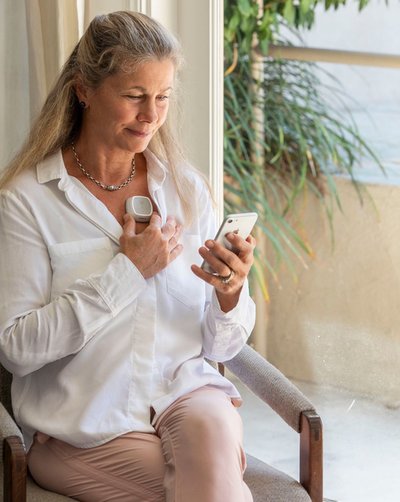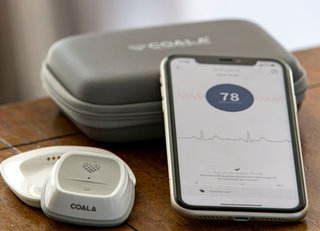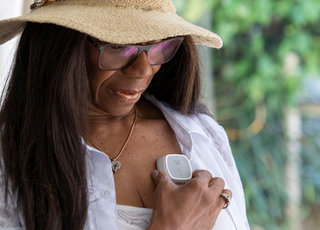Coala Heart Monitor for Stroke Management

In the United States, approximately 7 million living individuals have had clinical stroke and 13 million have had silent stroke. More than 140,000 people die each year from stroke, making it the third leading cause of death in this country.
Recurrent strokes make up almost 25% of the nearly 800,000 strokes that occur annually in the United States. It has been a constant endeavor of the medical fraternity to reduce recurrent stroke through new advances in science.
While the statistics are alarming, much of the numbers can be drastically brought down if we were to use Coala Heart Monitor to check our ECG at home regularly, so that Atrial Fibrillation (AF), a known and frequent culprit for stroke can be caught early on. ECG plays an important role in detection of several stroke risk factors/predictors including atrial fibrillation and left ventricular hypertrophy; both are components of the Framingham Stroke Risk Score.
In order to minimize recurrent stroke cases Dr. Peter Magnusson, cardiologist at the Cardiology Clinic in Region Gävleborg, and with academic affiliations to the Karolinska Institute, Stockholm, and Uppsala University, Sweden undertook a novel study. His team used the Coala Heart Monitor to evaluate 100 patients after cryptogenic stroke. The results of the TEASE-study were recently publish in BMJ Open (August 2020).
The patients for the study were recruited from two stroke units. All patients underwent routine ECG-telemetry in the stroke unit and were then continued to be evaluated with the Coala after discharge. For nearly a month, patients underwent scheduled monitoring twice daily and when symptoms occurred. The monitoring detected previously undiagnosed atrial fibrillation in 9% of the patients, at a mean of 19.7 days after stroke. Patient compliance to the Coala monitoring protocol exceeded 90%. "This level of compliance is surprisingly good because these patients recently had a stroke. In fact, this shows that the Coala Heart Monitor can be implemented in this setting of highly vulnerable patients. Thus, in many stroke survivors, this is a feasible approach and they will be potentially protected from recurrent stroke by anticoagulation treatment. Our study confirms the need of longer-term ECG monitoring," says Dr Magnusson.
There have been studies conducted earlier, like the CRYSTAL AF, which have shown that ECG monitoring with an insertable cardiac monitor (ICM) was superior to conventional follow-up for detecting atrial fibrillation after cryptogenic stroke. "What's unique about the TEASE study is that similar results were found non-invasively within 30-days using a Coala monitor. In the Crystal-AF study, it took 6-months to reach 8.9% by using an invasive insertable cardiac monitor. Prolonged continuous ECG monitoring or insertable cardiac monitors require substantial resources. Thus, while ECG monitoring over an extended period of time is crucial for stroke survivors, post-discharge Holter monitoring or patches are impractical, ECG data storage is limited, and data interpretation requires considerable resources. Insertable cardiac monitors offer continuous monitoring and the clinical implication in short episodes regarding anticoagulation is not clear. Therefore, we would recommend a hand-held device like Coala Heart Monitor as the main evaluation tool in the vast majority of cases, even though insertable cardiac monitor or other diagnostic approaches can be useful in selected cases. The TEASE study shows the benefit of Coala Heart Monitor in this patient group," says Dr Magnusson.
Cryptogenic Stroke and Underlying Atrial Fibrillation
Handhelds versus ICM

Dr. Peter Magnusson, MD





